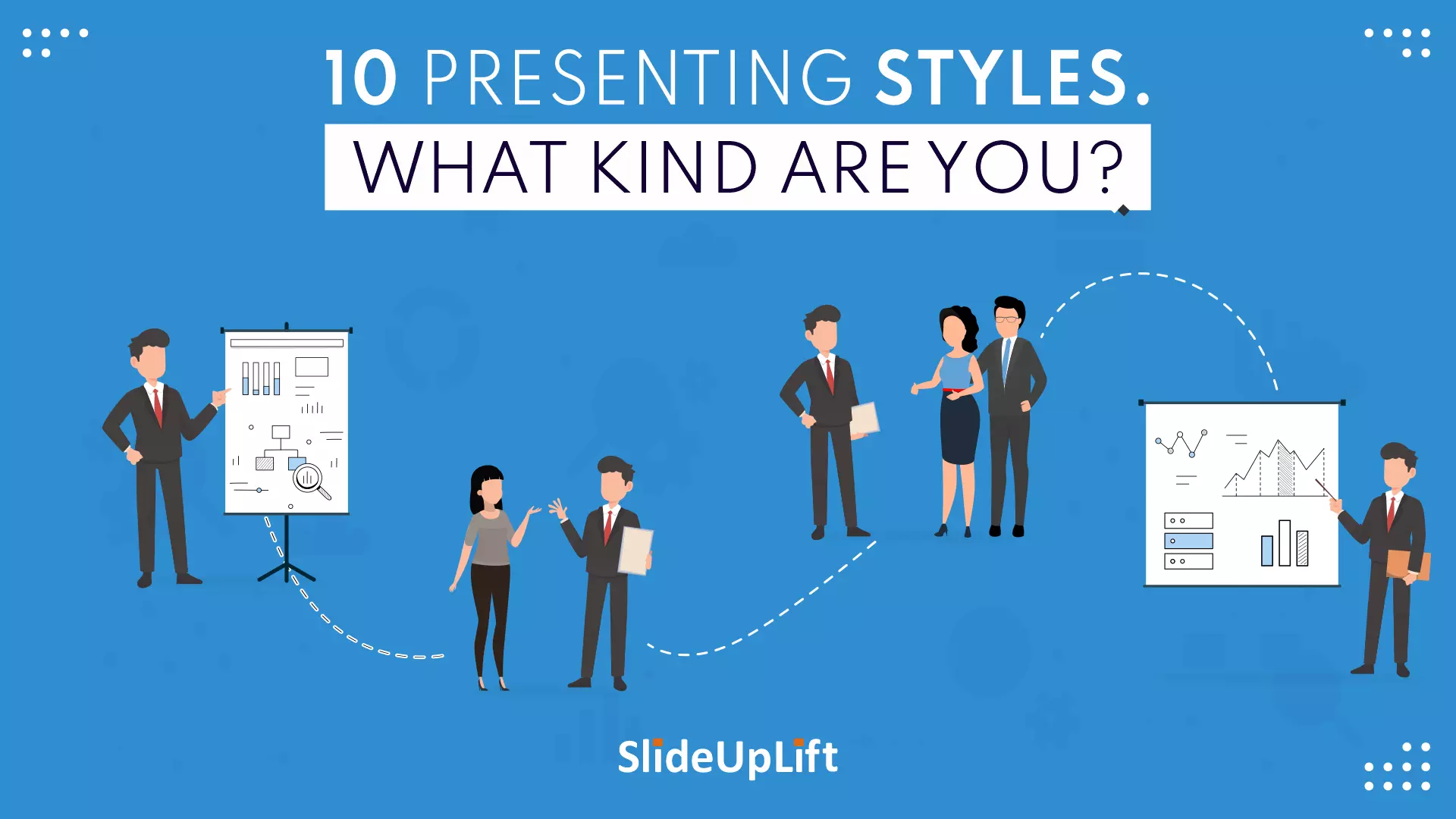6 Types of Presentation You Must Know (+ Tips)
Are you tired of giving the same old boring presentation, using the same format every time? Have you ever wondered if there are different types of presentations to achieve different objectives?
If any of these questions resonate with you, this blog is the perfect resource.
In today’s world, presentations are an essential part of almost every profession. At some point in your life, whether you are a student, business professional, or teacher, you will have to deliver a presentation. But do you know there are different types of presentations, each with a specific purpose and objective?
This blog will cover the six essential types of presentation that you should be familiar with. We will explain each type, its purpose, and some tips to deliver it effectively.
Let us delve into the different types of presentation and explore them together.
Why Do We Need Different Types of Presentations?
Different types of presentations effectively communicate ideas and information in a variety of settings and for different audiences. The purpose of a presentation can vary depending on the goals of the presenter and the needs of the audience. For example, a sales pitch may require a persuasive and visually appealing presentation to convince potential customers to buy a product, while a training session may need a more instructional and detailed approach.
The choice of presentation type depends on several factors, such as the purpose of the presentation, audience’s needs and preferences, and the presenter’s strengths and weaknesses. By selecting the appropriate type of presentation, the presenter can effectively communicate their message and achieve their desired outcome.
What are Different Types of Presentations?
To effectively communicate ideas and information, it is important to understand the different types of presentations that can be used for different purposes and audiences. Below is a list of different types of presentations:
- Informative Presentations
- Demonstrative Presentations
- Persuasive Presentations
- Instructional Presentations
- Inspirational Presentations
- Entertaining Presentations
Let’s explore them one by one:
-
Informative Presentations
Informative presentations, as the name implies, provide information or knowledge to the audience about a specific topic.
This type of presentation is often used in educational settings or business environments where information needs to be communicated clearly.
Tips for Creating Effective Informative Presentations:
- Know Your Audience: Understanding your audience is the key to creating an effective informative presentation. This means knowing their level of knowledge on the topic and what information will be most relevant and useful to them.
- Choose a Clear Topic: A clear and concise topic is essential for an informative presentation. This ensures that the audience understands the presentation’s focus and helps keep the content organized and easy to follow.
- Organize Your Content: Organizing your content into a logical structure can help to make the presentation easier to follow and understand. This means starting with an introduction, providing background information, and then moving into the main content of the presentation.
-
Demonstrative Presentations
Demonstrative presentations are one of the many types of presentation methods that aim to show or demonstrate how something works or how a particular process is completed.
These presentations are highly effective in technical or scientific fields but can also be used in other industries where hands-on demonstrations are necessary.
Tips for Creating Effective Demonstrative Presentations
- Choose the Right Props: Choosing the right props or models is essential for an effective demonstrative presentation. Ensure that the props accurately represent the topic and are easy to understand and use.
- Highlight Key Points: To make a demonstrative presentation effective, it is crucial to emphasize the critical points. This can help maintain the audience’s attention and concentration on the presented topic.
- Use Visual Aids: Incorporating visual aids like videos or images can significantly improve a demonstrative presentation. They can assist in simplifying intricate procedures or processes and increase audience engagement.
-
Persuasive Presentations
The purpose of persuasive presentations is to convince the audience to take a specific action or adopt a particular point of view. This type of presentation is focused on influencing the audience’s beliefs or behavior by presenting arguments, evidence, and emotional appeals.
These types of PowerPoint presentations are often used in sales, marketing, and advocacy, but they can also be used in other industries where persuasion is necessary.
The key to creating an effective persuasive presentation is to know your audience and tailor your message to their needs and interests.
Tips for Creating Effective Persuasive Presentations
- Use Emotional Appeals: Emotional appeals such as fear, guilt, or empathy can effectively persuade the audience. Ensure that your emotional appeals are relevant and not manipulative to the topic.
- Use Statistics and Facts: Using statistics and facts can add credibility to your persuasive presentation. Ensure that your statistics and facts are accurate and relevant to the topic.
- Use Stories: Using stories can be effective in persuading the audience. Stories can help to create an emotional connection with the audience and make your message more memorable.
- Provide a Clear Call to Action: Ensure your call to action is clear, actionable, and directly related to the topic.
- Practice Your Delivery: Make sure that you are confident and passionate about your message and that you can deliver it persuasively.
-
Instructional Presentations
Instructional presentations provide step-by-step instructions on how to perform a task or complete a process.
These presentations are often used in training, education, and technical fields.
Whether you’re teaching a new software program, demonstrating a manufacturing process, or explaining a complex concept, instructional presentations can be an effective tool for breaking down information into digestible pieces.
Tips for Creating Effective Instructional Presentations
- Identify Your Objectives: Identifying your objective is important for an effective instructional presentation. This helps you to focus your presentation on the most critical information and ensure that you are meeting the needs of your audience.
- Keep It Simple: Use simple language, avoid technical jargon, and break down complex procedures into manageable steps.
- Provide Examples: Use real-world examples relevant to your audience and demonstrate how the concepts or procedures can be applied.
-
Inspirational Presentations
Inspirational presentations are those types of presentations that aim to motivate, inspire, and uplift the audience. These presentation types are often used in business, education, and personal development.
These presentations are meant to help the audience see things from a new perspective, feel empowered to take action, and believe in their ability to make positive life changes.
Tips for Creating Effective Inspirational Presentations
- Use Personal Stories: Personal stories can help connect with the audience personally and inspire them to take action. Share your own experiences and struggles, and demonstrate how you overcame challenges and achieved success.
- Use Quotes and Examples: Using quotes and examples can help to reinforce your message and inspire the audience. Use quotes from influential personalities and provide examples of successful individuals who have achieved their goals.
- Provide Actionable Steps: Provide specific steps for the audience to achieve their goals and overcome challenges.
-
Entertaining Presentations
As the name suggests, entertaining presentations are meant to engage and captivate the audience with humor, storytelling, or other entertaining elements.
The primary goal of this type of presentation is to entertain the audience, leaving a lasting impression and making the presentation memorable.
Different types of PowerPoint presentations have specific goals, and entertaining presentations are often used in settings such as events, social gatherings, etc.
Tips for Creating Effective Entertaining Presentations
- Use Humor: Humor is a powerful tool that helps to engage and entertain the audience. Use jokes, puns, and witty remarks to add a touch of humor to your presentation.
- Tell a story: Use anecdotes, personal experiences, or fictional stories to create a narrative the audience can relate to.
- Use interactive elements: Incorporating interactive elements such as quizzes, polls, and games can effectively interrupt the monotony of the presentation and enhance audience engagement. Use these elements to encourage audience participation and create a more dynamic experience.
- Practice timing: Timing is everything when it comes to entertaining presentations. Make sure your presentation is well-timed, and avoid going over time, as this can disrupt the flow of the presentation and cause the audience to lose interest.
- Engage the audience: Engage the audience throughout the presentation by asking questions, encouraging participation, and creating a relaxed and enjoyable atmosphere.
READ MORE: 10 Practical Ways To Improve Your Presentation Skills Today
Wrapping It Up
Understanding the different kinds of presentations is crucial for delivering an impactful and compelling message. By knowing the forms of presentation and their specific goals, you can tailor your content and delivery to achieve your desired outcome.
Whether you’re looking to inform, demonstrate, persuade, instruct, inspire, or entertain, the key is to know your audience and engage them through your content and delivery. By implementing the tips for each type of presentation, you can create a powerful and engaging presentation that leaves a lasting impression.
Remember, practice makes perfect. Take the time to rehearse and refine your presentation to ensure you deliver it confidently and clearly.
People Are Also Reading:
- PowerPoint Presentation Tips: How To Make A Good PowerPoint Presentation
- 9 Best Presentation Ideas That Your Viewers Will Adore
- 3 Most Important Presentation Tips To Make Your Presentation StandOut
- How To Make A Presentation: A Comprehensive Guide
- How To Start A Presentation: Make A Strong First Impression
















